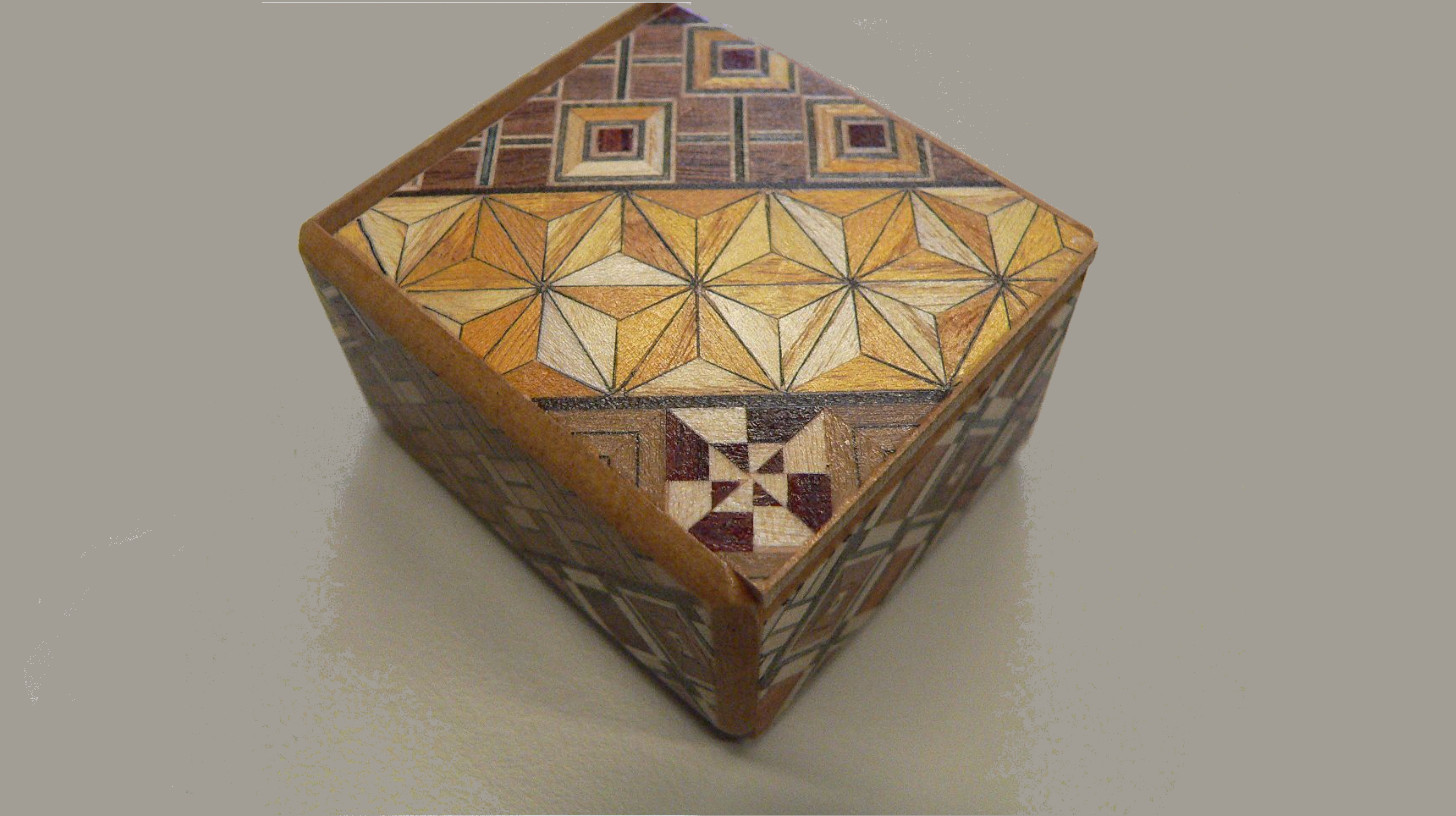The Japanese have a rich tradition of making puzzle boxes, known as “Himitsu-Bako” in Japanese, which translates to “secret box” or “trick box”. These boxes originated in the Hakone region of Japan during the late Edo period (1603-1868), particularly in the 19th century.
Japanese puzzle boxes are renowned for their intricate design and the precision required in their construction. They typically require a series of sliding movements to open, and the number of moves can range from a few to a very large number, making some of them quite challenging to unlock. The craftsmanship involves detailed marquetry and fine woodworking skills, often using a variety of natural woods to create beautiful patterns and designs on the surface of the boxes.
The tradition of making these puzzle boxes continues to this day in Japan, and they are popular both as functional art pieces and as unique gifts. The skill and artistry involved in creating Japanese puzzle boxes are highly valued, and they are often collected for their beauty and the ingenuity of their locking mechanisms.
1980s revival
There was a significant revival of interest in Japanese puzzle boxes in the 1980s. This resurgence was partly due to increased international exposure and appreciation for Japanese craftsmanship and culture during that period. As global travel and cultural exchange became more prevalent, more people outside Japan became aware of and fascinated by these intricate objects.
Several factors contributed to this renewed interest in Japanese puzzle boxes in the 1980s:
- Tourism: As Japan became a more popular tourist destination, visitors often purchased puzzle boxes as unique souvenirs, leading to a boost in their production and variety.
- Global Trade and Collectors: The growth in global trade and communication made it easier for collectors and enthusiasts around the world to acquire and learn about Japanese puzzle boxes.
- Cultural Appreciation: There was a growing global appreciation for Japanese art and craftsmanship, including traditional practices like woodworking and marquetry, which are central to the creation of puzzle boxes.
- Media and Popular Culture: The portrayal of Japanese culture in media and popular culture also contributed to a broader interest in traditional Japanese arts and crafts, including puzzle boxes.
This revival helped sustain the art of making Himitsu-Bako, ensuring the transmission of these traditional techniques to new generations of craftsmen and maintaining the cultural heritage associated with these unique objects.
Uses
A Japanese puzzle box, or Himitsu-Bako, serves multiple purposes beyond its intricate design and aesthetic appeal. Traditionally, these boxes were used to securely store personal belongings, such as letters, jewelry, or important documents. The complexity of their locking mechanisms, which require a specific sequence of movements to open, provided a level of security against unauthorized access. In modern times, while they still can be used for storage, puzzle boxes are often appreciated more for their artistic and intellectual value. Collectors and enthusiasts value them for the craftsmanship, the challenge they present, and the beauty of the detailed marquetry. Additionally, they make for unique and thoughtful gifts, serving as an intriguing conversation piece while also offering a practical use as a keepsake box. The enjoyment derived from solving the puzzle to reveal the hidden compartment adds an interactive and engaging aspect to their charm, making them a cherished item for both their functionality and the craftsmanship they embody.
